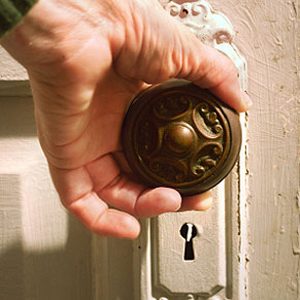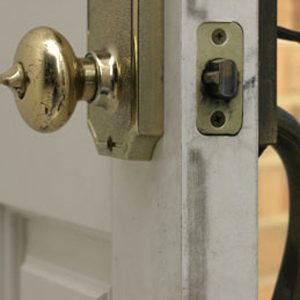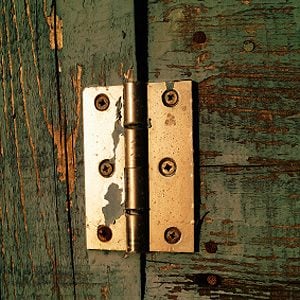
1. Get the Lead In
Forget about oil, which can do more harm than good to a stuck lock. The best lubricant for a lock’s inner mechanism is graphite, and a good source of graphite is pencil lead.
Rub a sharpened, soft lead pencil (No. 1 or No. 2) repeatedly against the companion key, and insert it several times into the lock. Perform this trick twice a year to keep locks in top working condition.

2. Remove a Broken Key
It happens all the time – keys get old and bent and wind up breaking off inside the lock. If you can’t enter your house or apartment through another door, run to a neighbour to borrow a couple of items before calling a locksmith.
First, try removing the broken piece with tweezers. If that won’t work, apply a drop of super glue to the end of the piece that’s still on your key chain. Line it up with the part inside the lock, and carefully insert it. Hold it in place for 40-60 seconds and then slowly pull out the key.

3. Light Up Your Lock
You know what it’s like to come home to a dark porch and have to feel around for the lock on your front door. If you never want to go bump in the night again, dab a few drops of glow-in-the-dark paint around the keyholes of your exterior locks with a cotton swab or small paintbrush. Do the same for any dead-bolt locks on the inside of your house as well, which will make exiting much easier in the event of a power outage or other emergency.

4. Polish a Loose Doorknob
A wobbly doorknob is often the result of a loose setscrew (a tiny screw found on the doorknob shank), which keeps the knob firmly in place on the spindle. Everyday usage can cause setscrews to loosen, but you can keep them in place by brushing on a little clear nail polish right after you tighten them.

5. Pop Goes the Rusted Bolt
Loosen a rusted bolt by rubbing it with a few tablespoons of carbonated soda.

6. Unstick a Stuck Door
If your front door sticks because it rubs against the floor or threshold, try this simple fix. Duct-tape all four edges of a coarse sheet of sandpaper to the floor where the door rubs, then open and close the door over the sandpaper until it swings smoothly.

7. Reset a Hinge Screw
A loose hinge will cause a door to stick or become difficult to open or close. Tightening the hinge screws usually solves the problem, but if an undamaged screw won’t grip, it means the hole is stripped or stretched out.
To fix it, slide a magazine or two to prop the opened door, if necessary, and then remove the hinge. Loosely fill the screw hole with wooden toothpicks or matchsticks soaked in wood glue. Keep them flush with the frame by carefully trimming off any protruding ends with a utility knife. When you screw back the hinge, the extra wood should hold the screw firmly in place.

8. Pamper a Noisy Hinge
Is that squeaking door hinge making you unhinged? A few drops of baby oil applied around the pin should solve the problem. Can’t find the oil, and you’re out of WD-40? A bit of cooking spray, petroleum jelly, or even shaving cream can be used to quiet a squeaky hinge.